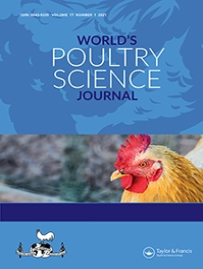Document type: scientific review published in the World's Poultry Science Journal
Authors: Brian Tainika, Ahmet Şekeroğlu, Ahmet Akyo, Zacharia Waithaka Ng'ang'a
Preview: Development of quality welfare assessment protocols is a necessary step towards achieving high broiler welfare standards. Rapid growth rate and highly intensive commercial production systems have been highly associated with poor welfare indicated by mainly leg deformities, high stress levels and increased fear responses. Stress response in broilers is characterized by increased corticosterone and heterophil-to-lymphocyte ratio especially under heat stress, high light intensity, high stocking density, and an unenriched environment. Rearing environment, genotypes, high light intensity and human handling highly influence fear responses as proved during tonic immobility, open field, novel enrichment, and avoidance distance tests. Lameness which is usually visually assessed by a gait score scale remains an undisputable indicator of poor welfare in broiler production due to its effects on mobility and association with pain. Other leg problems including footpad dermatitis and hock burn also remain significant and they are highly associated with fast growth, high stocking density, poor litter quality, and poor or non-enriched production systems. Litter management and good ventilation are necessary to ensure good plumage conditions, reduction in ammonia emissions thereby promoting the well-being of broilers. Generally, broilers should be motivated and able to exhibit natural behaviours without straining including feeding, drinking, walking, and stretching thereby enhancing bird health, performance, production, and consumer satisfaction. Using a systematic approach, the important welfare parameters including stress, fear response, leg problems, plumage condition, environment, and behaviour are intensively discussed to explore the latest insights of broiler chickens' welfare.






